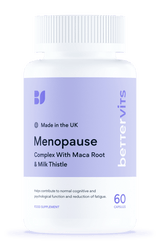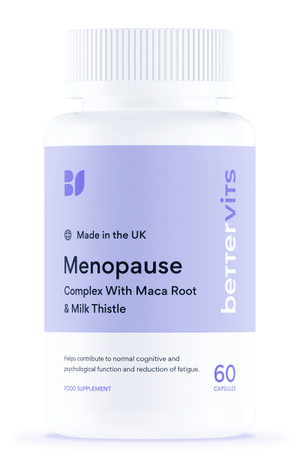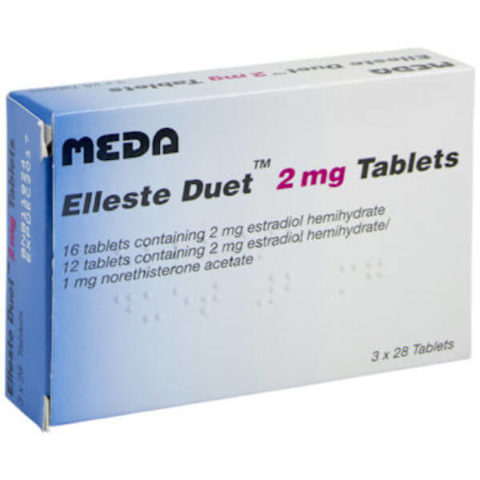What are good FSH levels during Perimenopause?
.png?v=1675957039371)

Related products
Overview
There are four stages of a healthy woman's reproductive cycle. These include: premenstrual (before puberty), menstrual (after puberty), perimenopause and menopause (complete stoppage of having periods, females become infertile after menopause). Perimenopause (around menopause) is a transition period during which a female’s body shifts towards menopause. So it is also named the menopausal transition.
FSH and Perimenopause
FSH (follicle-stimulating hormone) plays a key role in this change to menopause. That is why it can be important for women to monitor their FSH levels. An FSH level of around 30 IU/L indicates that perimenopause is achieved. So during perimenopause, its level should be approximately 25 IU/L, but there can be a wide range. A high level of FSH for one or a few days cannot establish the concept that menopause is achieved. Further, we will discuss the optimum level of FSH during menopause and its effects on the body.
What is Perimenopause?
Perimenopause is a natural process in which the body is preparing itself to shift towards menopause. This period helps to prepare the body to survive the menopause period. There is an abrupt rise and fall in FSH levels, which are correlated with oestrogen levels in the body. It can be said that this process is the closing of the ovarian function, which might take some time, usually between a few months and up to four years.
While four years is the average value, it can range from two to ten years. Perimenopause will normally start after 40 years of age and lasts about 2-8 months. It is divided into two stages. One is an early transition, in which the menstrual cycle is regular to some extent, but a few other interruptions occur. The second one is a late transition, during which the amenorrhea stage occurs for about 60 days, along with other symptoms characterized during this period.
Looking to measure your FSH levels? Order a Welzo Menopause or Perimenopause Blood Test!
What are the symptoms of Perimenopause?
During this stage, the menstrual cycle becomes irregular, and its length may shorten. The symptoms vary from woman to woman. Some of the most significant observations made during this period include:
- Changes in sleeping schedule,
- Sweating at night,
- Urine leakage,
- Mood swings,
- Fatigue,
- Vaginal atrophy
Other symptoms observed are:
- Period irregularities (heavier or lighter than normal),
- Loss of sexual drive,
- Weight and hair changes,
- Muscle pain,
- Breast tenderness.
These symptoms can be quite disturbing for some women, especially if they present as quite severe. Still, others may find this period relieving because the menstrual cycle is more stressful.
Read more: Perimenopause symptom checker.
Why is FSH level important in Perimenopause?
The anterior pituitary glands secrete FSH in pulses, which stimulates the development of the ovarian follicles creating the eggs. It then triggers the ovaries to release those eggs during ovulation. FSH is a major hormone both in males and females because the female ovaries won't be able to produce eggs and the male testicles will be unable to produce sperm if FSH is absent. It also contributes to the reduction of the production of oestrogen.
Decreasing oestrogen levels will make the ovaries gradually non-functional and move the body towards menopause. Measuring the FSH level of the blood will tell us if menopause is about to be achieved or not. But tests to check FSH levels are not applicable and can be misleading because, during this period, FSH levels can continue to fluctuate.
What is a good FSH level in Perimenopause?
Normal FSH levels are very hard to demonstrate during a female's life because the level keeps fluctuating. The normality depends upon the range around which they fluctuate and the symptoms observed due to this change. When FSH achieves the constant level of 40, it is considered that perimenopause is finished and menopause has been achieved. The measurement of its level is essential to check whether the female is fertile during perimenopause. It is also associated with the symptoms that occur during perimenopause which increase with hormone fluctuations.
Read more: When should I take a menopause blood test?
High and low FSH levels during Perimenopause
High FSH levels at the start of perimenopause are correlated with the stimulation of more follicles formation, which increases the chances of zygotes in women having a pregnancy in old age. But the negative side is that even a little increase in FSH levels, such as 10-20 IU/L, will lead to ovarian cysts (fluid-filled areas on the ovaries, which are immature follicles.
There is a high risk of cardiovascular disorders and osteoporosis associated with FSH and oestrogen levels during this period. Suppose the level of hormone is less than normal. In that case, it shows the absence of fertility even from the perimenopause stage of the reproductive cycle. This can be a problem for those who want to conceive at that age.
Read more: What are the signs that perimenopause is ending?
Maintenance of good FSH levels during Perimenopause
FSH levels range from 25 to 90 IU/L during perimenopause, but its suitable value is below 30 IU/L. This level can be maintained by using hormone replacement therapy (HRT) and oestrogen replacement therapy (ERT). It will work in such a way that it will act as negative feedback in the body to stop the anterior pituitary gland of the brain from secreting high levels of FSH.
This type of therapy is usually done to relieve the symptoms experienced during the perimenopause period. Some physicians also suggest birth control pills at this time to help regulate menses and relieve symptoms like vaginal dryness, depression, sweating and hot flashes. Herbal medicine is also sometimes used, but they are not necessarily effective.
A female can check her status using a menopause blood test and perimenopause test
If you're concerned about your fertility or hormone levels, order a Welzo Female Fertility Blood Test.























 Rated Excellent by 26,523+ Reviews
Rated Excellent by 26,523+ Reviews